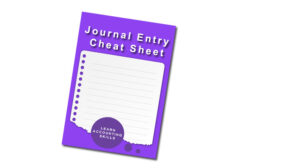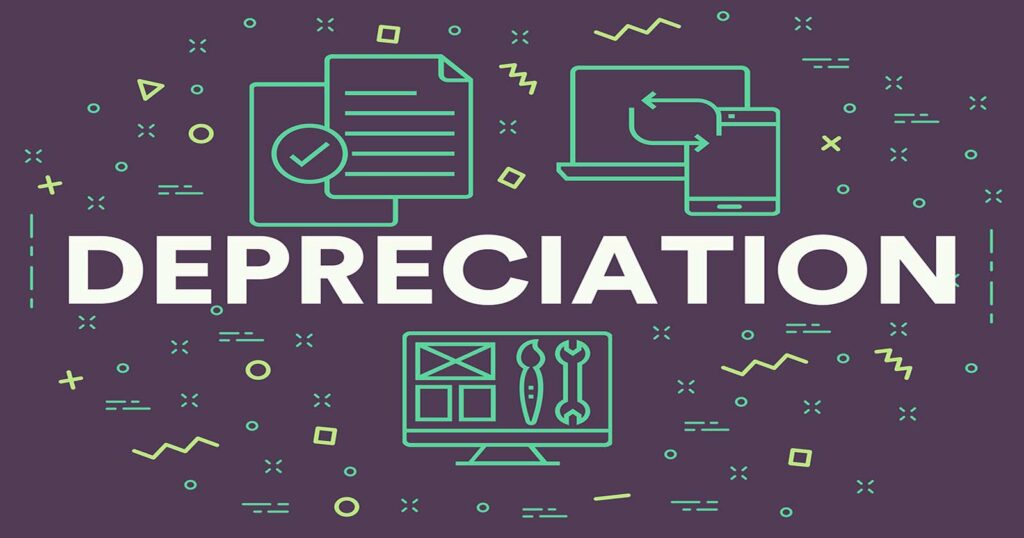Journal entries are one area in beginner accounting that give most students a bit of trickiness. They require students to tie together everything we have learned so far including the basic accounting equation, debits, credits, accounts, T accounts and normal balances. If you don’t feel you have grasped all of those then it may be time for a quick review. If you do have a handle on those topics then let’s get into journal entries in accounting.
What are Journal Entries in Accounting? The Basics
Journal entries are how we record transactions and adjust accounts. Every financial transaction is recorded in a journal entry. Generally, a journal entry includes the date of the transaction, the accounts involved, and the amount of money exchanged. These entries are then posted to a ledger or accounting software program, which summarizes and categorizes them based on account type.
In the old times, entries would physically be written into a journal to capture accounting activity. Now software automates a lot of this but it is still important to know how they work.
Why Are Journal Entries Important?

Even though software like QuickBooks can process journal entries, you may need to adjust accounts manually. This is where understanding journal entries is necessary. From adjusting accounting during the year, to month-end or year-end close, journal entries need to be in an accountant’s toolbox.
Journal Entries Format: What to Know
We’ve briefly touched before on how there are two sides to every transaction in double-entry accounting. While we haven’t formally spent too much time on double-entry accounting, you’ll get an idea here and we’ll explore it more, later on.
Typically, as we mentioned, journal entries are recorded in software. For some business owners, they may make their journal entries in excel. It’s not uncommon for auditors to propose journal entries into accounts that are misrepresented by clients. Often they will pass journal entries in a standard Excel template.
Excel is a great way to work out a journal entry even before putting it in an accounting system. It would follow a format similar to the below.
| Date | Account | Debit | Credit |
| 15-Dec-23 | Cash | $5,000 | |
| Service Revenue | ($5,000) |
Journal Entries Examples
Journal entries get easier, the more you practice them. There can be a lot of sub-accounts so it is important to understand the 5 main account types (assets, liabilities, equity, income & expenses), along with their normal account balances. Effectively if you conceptually understand these two concepts then you should be able to master journal entries.
That said, let’s get into some journal entry examples.
Example 1: Journal Entries of Purchase
Imagine Steff’s Supplies sells a kitchen mixer on credit to Barry’s Bakery on August 15, 2023. Barry paid the invoice on September 15, 2023. We will look at the journal entries on Barry’s books first.
| Date | Account | Debit | Credit |
| 15-Aug-23 | Fixed assets: mixer | $2,000 | |
| Accounts payable | ($2,000) |
| Date | Account | Debit | Credit |
| 15-Sept-23 | Accounts payable | $2,000 | |
| Cash | ($2,000) |
Example 2: Accounts Receivable Journal Entry
Now let’s look at Steff’s books on August 15, 2023 and Sept 15.
| Date | Account | Debit | Credit |
| 15-Aug-23 | Accounts receivable | $2,000 | |
| Sales | ($2,000) |
| Date | Account | Debit | Credit |
| 15-Sept-23 | Cash | $2,000 | |
| Accounts receivable | ($2,000) |
Example 3: Depreciation Journal Entries
Now Barry has a new stand mixer in his kitchen bakery. He is going to record depreciation for the mixer over 10 years.
| Date | Account | Debit | Credit |
| 15-September-23 | Depreciation expense | $16.66 | |
| Accumulated depreciation | ($16.66) |
Example 4: Journal Entries for Accrued Expenses
Next Barry accrues for his rent at the beginning of each year because he has signed a contract for 12 months and knows the amount he will pay each month. At the beginning, he makes the following entry
| Date | Account | Debit | Credit |
| 1-January-24 | Rental Expense | $12,000 | |
| Accrued Rental Expense | ($12,000) |
| Date | Account | Debit | Credit |
| 31-January-24 | Accrued Rental Expense | $1,000 | |
| Rental Expense | ($1,000) |
Journal Entries Cheat Sheet
So how do you keep all of those journal entries straight when you get into public or private accounting? Luckily a lot of journal entries will be repeated from period to period or year after year. The easiest way is to understand the normal account balances over time. This will help you piece together journal entries.
When you are still stuck, journal entry cheat sheets and Google are always an accountant’s best friends. Sign up below and access Learn Accounting Skills’ free journal entry cheat sheet.
Want to Make Journal Entries Easier?
Download our FREE Journal Entry Cheat Sheet now.

By subscribing, you are agreeing to join the Learn Accounting Skills newsletter.
Final Thoughts on Journal Entries in Accounting
Journal entries may be the hardest area for new accountants to grasp. You’ll need to put together all of the previous skills you’ve learned and we’re confident you’ll get it with time. After all, a lot of real-world job won’t be using journal entries every day. It’s something you need an understanding of before moving onto more advanced accounting topics but just remember you can always get help at a job or leverage online resources. Stick with it and we’ll see you in the next accounting lesson.





